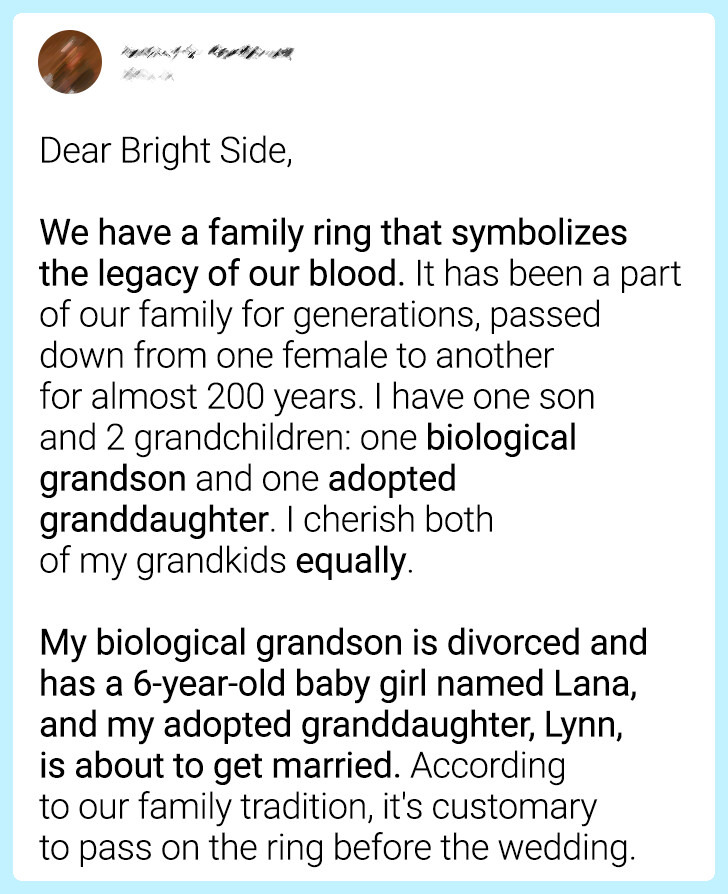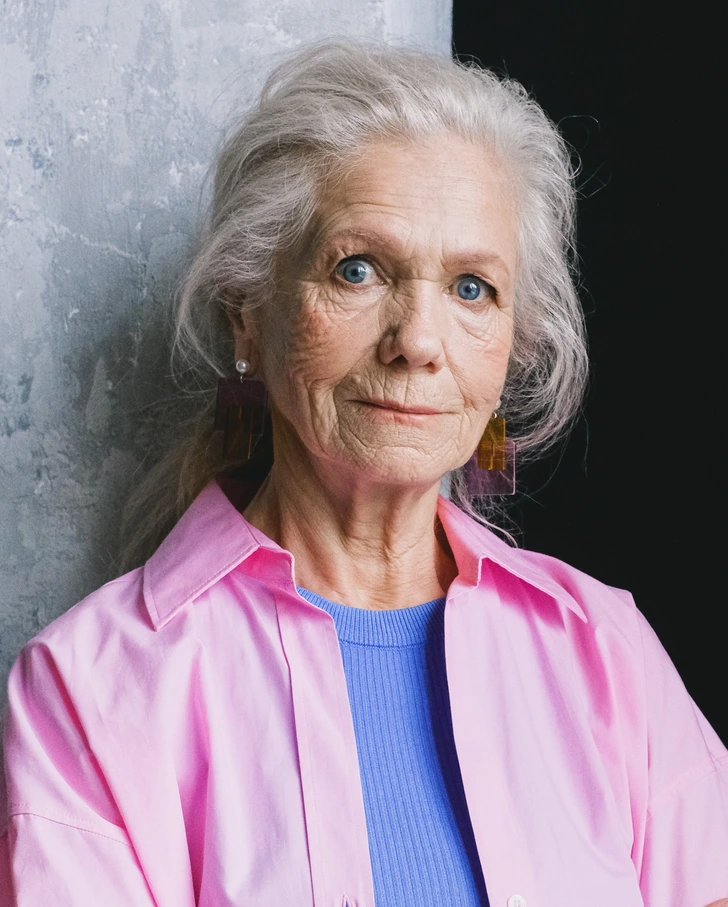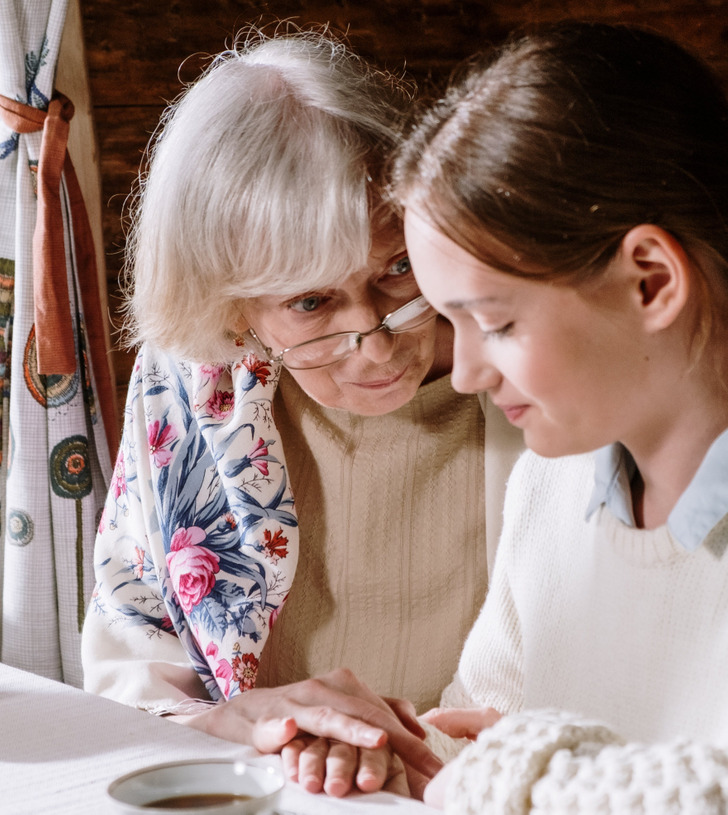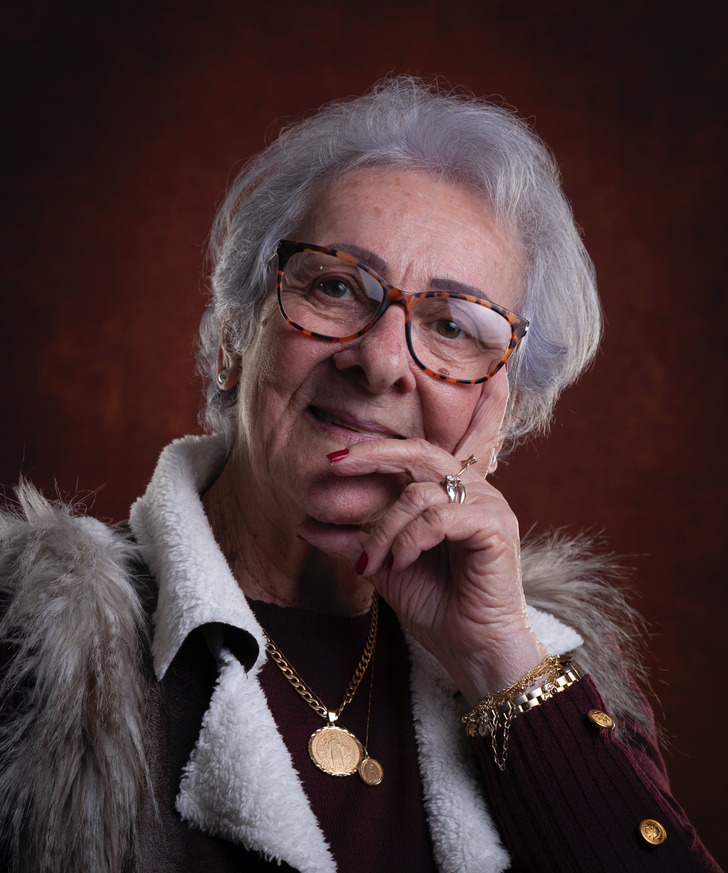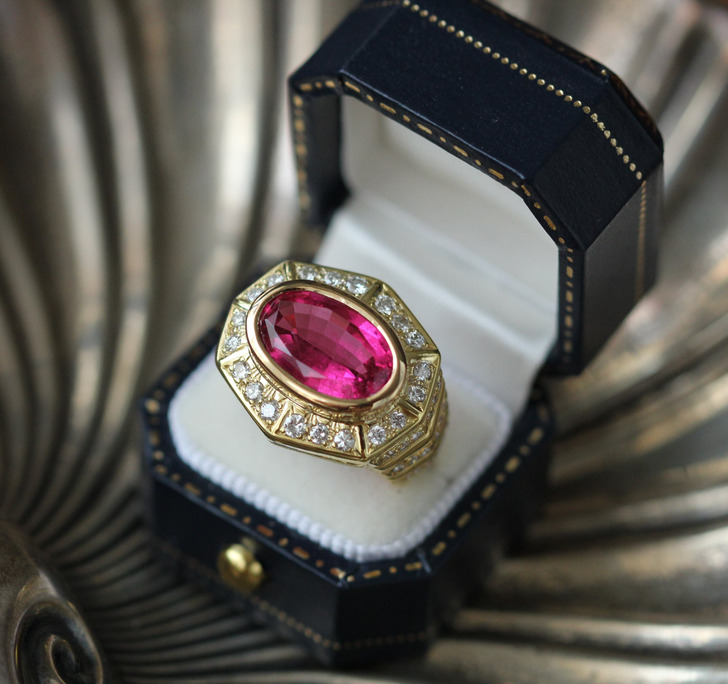Facing difficult decisions within family dynamics often tests our values, our empathy, and our understanding of what truly constitutes a family legacy. This is vividly illustrated in the predicament faced by Blythe, who must decide how to deal with the delicate issue of passing on the precious family ring. Traditionally held in bloodlines, the ring now stands at the center of a burning choice: should it go to her biological granddaughter or her equally beloved adopted granddaughter?
This situation raises fundamental questions about the nature of family ties and the symbols we use to represent them. Family heirlooms have not only financial value, but also emotional weight, embodying the heritage and memories of past generations. For Blythe, the decision is not just about who will receive the ring, but what her choice will mean about her values and the nature of family ties that go beyond biological ties.
Life will constantly present difficult and complex choices, and we can never be sure that we have made the best choice. Reader Blythe recently reported on a difficult situation where she had to decide who to give her family’s ring to: her blood descendant or her adopted granddaughter.
Start a family conversation.
Talk openly with your husband, son, and both of your grandchildren. Explain your decision and the underlying feelings that led to it, emphasizing the value of maintaining a family custom. Allow everyone to share their thoughts and concerns.
Challenge them to understand the importance you place on the emotional connection of the ring and how it transcends biological bonds. By encouraging dialogue, you may be able to come to an agreement and find a solution together that respects family ties and traditions.
Establish a symbolic family custom.
To commemorate a family legacy, suggest a new tradition or gesture that Lynn’s wedding might include.
It can be a meaningful speech, a specific blessing, or the creation of a unique memento that represents continuity and unity.
You can emphasize the importance of both of your grandchildren in your life by creating an inclusive and meaningful tradition for Lynn’s wedding. In this approach, the emphasis shifts from the actual physical handing of the ring to the event that brings the family together.
Record the history of the ring.
Gather information about the ring’s origins, its legacy through the ages, and biographies of the women who wore it. Think about writing a story or illustrating a beautiful family album that highlights the importance of the ring.
Give these documents to Lynn and Lana as well as the rest of the family so they can see the rich history of the ring. Regardless of the actual ownership of the ring, this method guarantees the preservation of its emotional value while reinforcing the importance of family history.
Give Lynn a symbolic gesture.
Think about how to make Lynn another meaningful and symbolic gift for her wedding. It can be a sentimental heirloom from your family or a specially made object that symbolizes your special relationship with her.
Tell her how important this gesture is and emphasize that even though the rings are different, the love and connection they represent are still very significant. You can appeal to your husband’s feelings and reaffirm the closeness of family relationships by making Lynn feel loved and respected in her own way.
Sometimes navigating family dynamics can be really challenging. Another Bright Side reader, Sarah, came to us for advice after her husband decided to adopt his young niece – a move she vehemently opposes. Watch her full story here.
In conclusion, dealing with family heritage and traditions requires sensitivity and a deep understanding of family dynamics and individual emotions. Blythe’s dilemma about passing on her family ring presents a challenging scenario that requires open communication and empathy. By engaging in a family discussion, he not only clarifies his intentions, but also opens up space for dialogue and allows each family member to express his thoughts and feelings. Establishing a new symbolic tradition can further strengthen the sense of unity and inclusiveness and ensure that all members feel valued regardless of the final decision on the legacy.
Additionally, documenting the ring’s history and sharing it with family can deepen everyone’s appreciation of the heirloom and make its emotional value accessible to all. Offering Lynn a meaningful alternative gift can further emphasize that while heirlooms are precious, the bonds they represent are even more significant. Through these thoughtful gestures, Blythe can navigate this difficult situation with grace, maintain family harmony, and strengthen the unconditional love that defines true family bonds, beyond biology.
After all, the approach to such delicate matters should always be guided by compassion and a commitment to maintaining strong and loving family relationships. This story serves as a reminder of the complexity of family life and the importance of approaching every situation with care and consideration and ensuring that each family member feels respected and honored.
